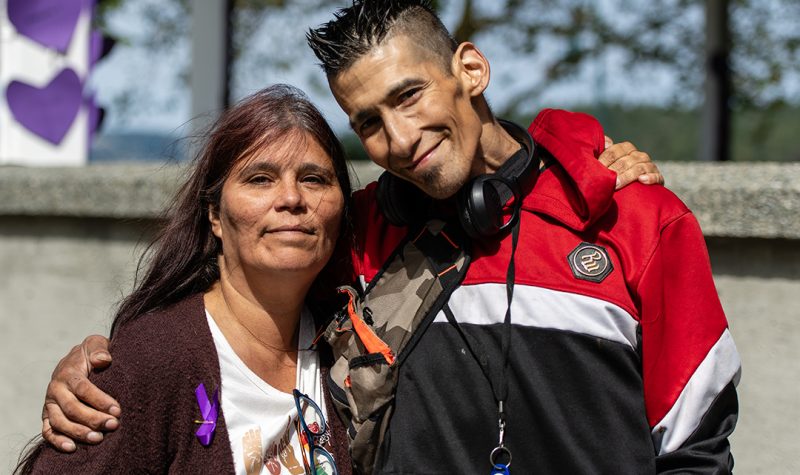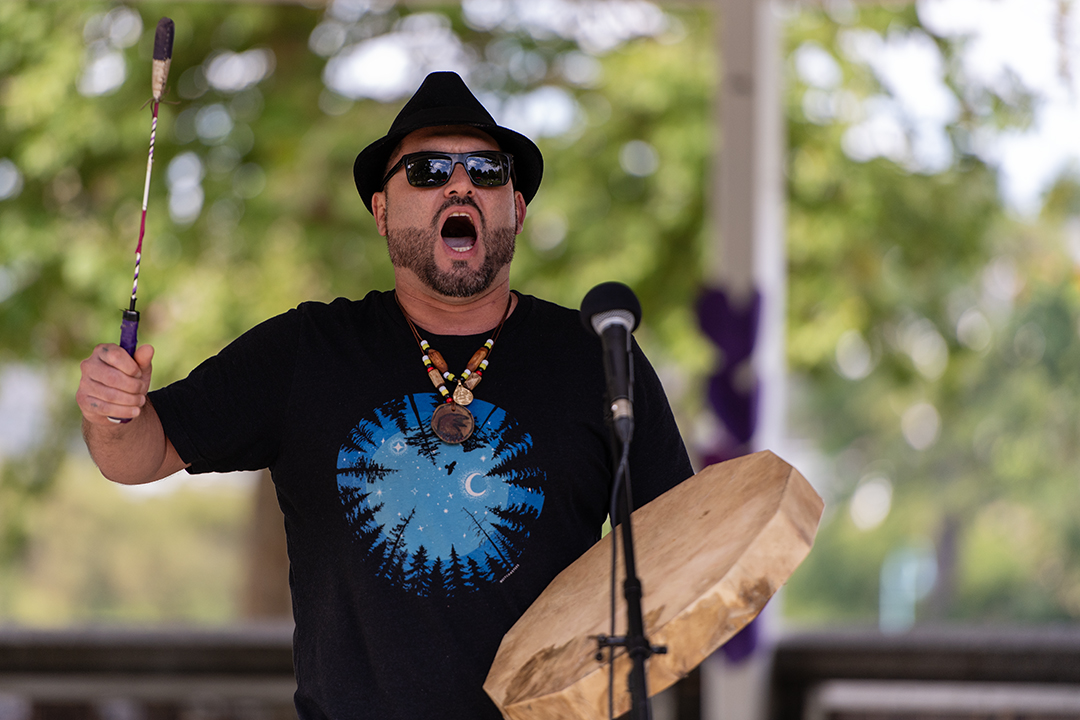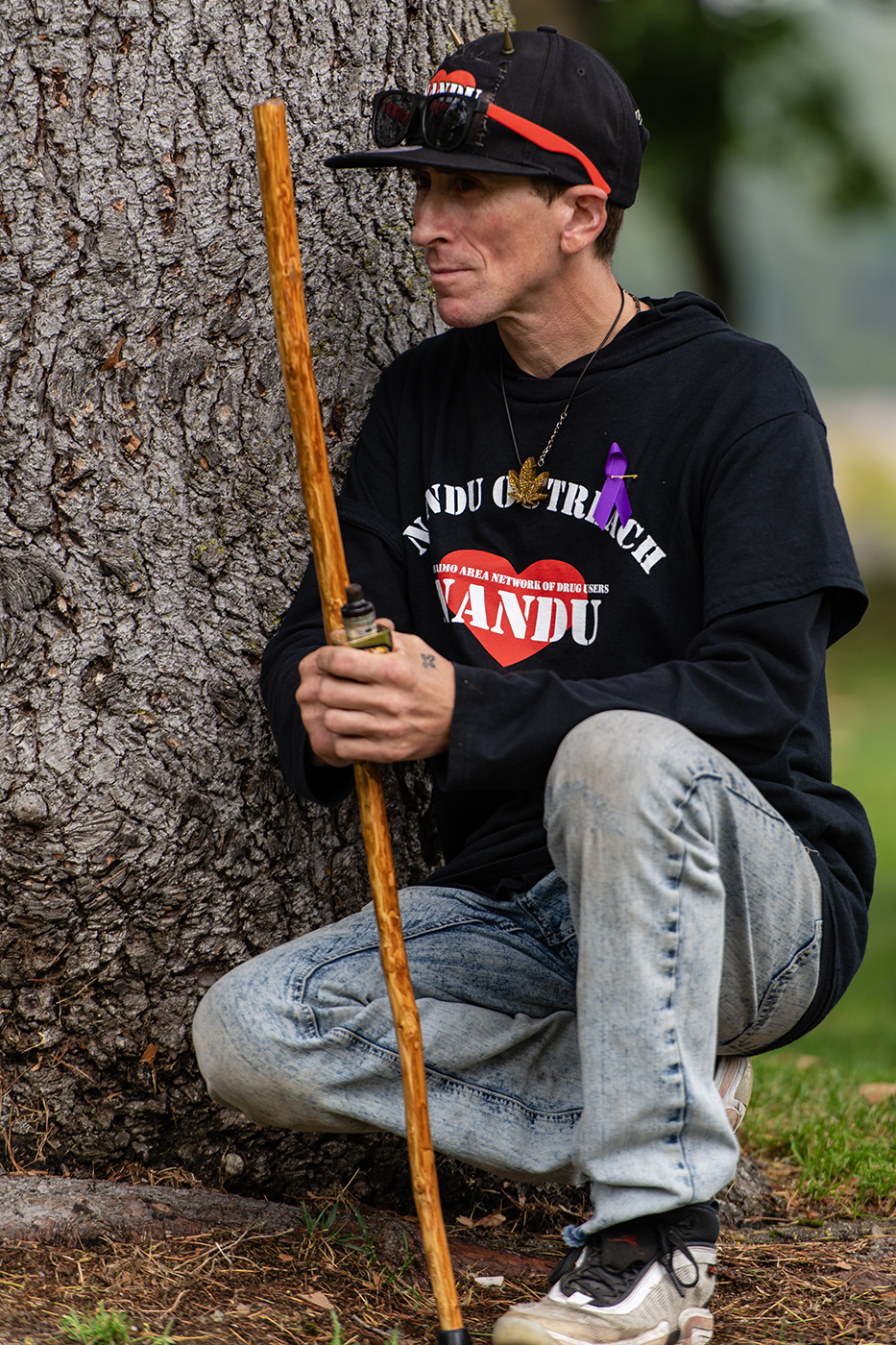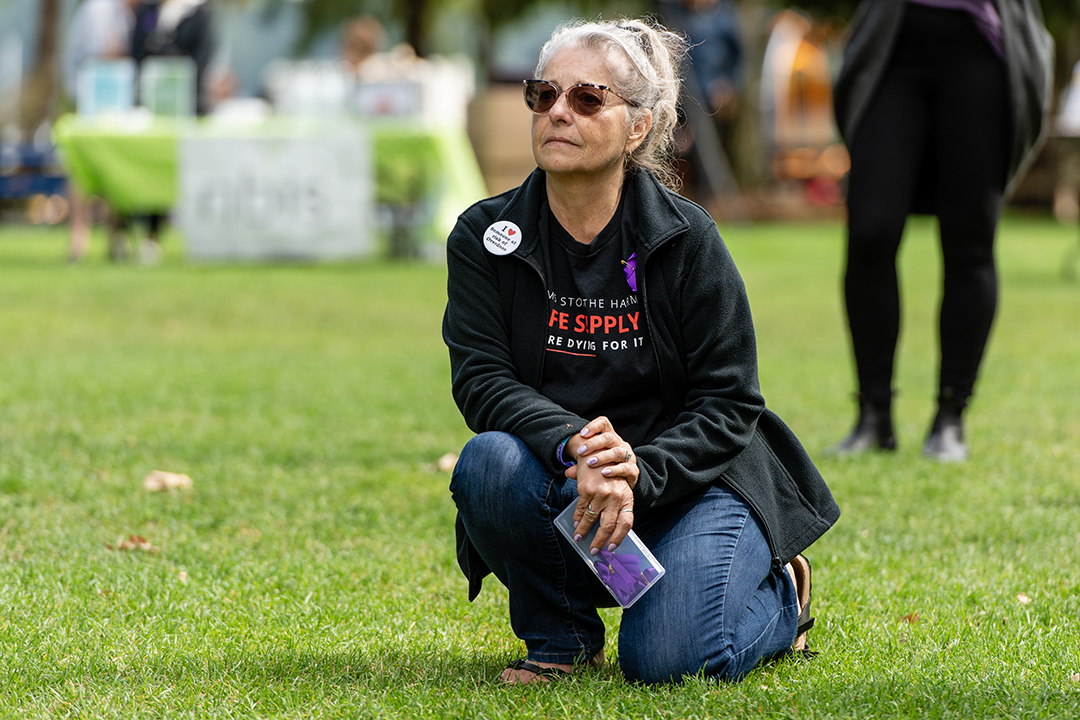A crowd of harm reduction advocates, people who use drugs, and local politicians gathered in Nanaimo’s Maffeo Sutton Park on Thursday to mark International Overdose Awareness Day.
According to the latest report by the BC Coroners Service, Nanaimo has seen 76 unregulated drug deaths in the first seven months of 2023, just one shy of the annual record of 77 deaths in 2022.
Nanaimo has five per cent of all drug deaths in the province this year, only behind the large cities of Vancouver, Surrey, and Greater Victoria.
Central Vancouver Island has seen a total of 129 fatalities in the first 7 months, while South Vancouver Island had 95 and North Island had 51.
Sarah Lovegrove is a registered nurse and the chair of the Nanaimo Community Action Team that helped organize the event.
“This day is extremely emotional for me,” she said. “I feel very sad listening to these stories, mainly because I know how deeply communities are impacted by this crisis, but also in recognition of the inaction of policymakers for the past several years.”
One of the people sharing stories at the event was Aimee Chalifoux, who works at the 7-10 Club providing meals to the homeless. She told a story about finding a man overdosing in an encampment five years ago.
“I thought he was my son at first, because there was so much stuff in the way, and he was dead,” she said. “People around were screaming, crying and panicking. I don't know how but I just threw stuff out of my way…The next thing I knew I was on top of them and doing CPR.”
The man Chalifoux saved that day was Andre Laflame. They stayed in touch over the years, working together on a Cree language program, and attended the Overdose Awareness event together.
“Now he's my brother and he's doing great and I'm so proud of him,” Chalifoux told the crowd.
Qui Sepulveda is the peer outreach coordinator for the Nanaimo Community Action Team, who was able to access BC’s prescribed safe supply program in their journey to sobriety.
“Every time I wake up next to my wife feels like a gift,” Sepulveda said. “Because I have so many loved ones who were never given that chance. I still have so many new friends who don't have the option to access safe supply. I am 23 years old and I am sick of losing the people that I love.”
Wanda LeBlanc was at the event with Moms Stop the Harm. She said that her opinion on safe supply has changed drastically in the past five years with a son who uses drugs.
“It's a way to keep them alive long enough for them to find support,” she said “It's a way to engage them and let them know that there is support out there for them. That's what safe supply is about, it's not about providing drugs.”
Lovegrove says that while the safe supply program is important, its efficacy is limited both by the number of prescribers as well as its reliance on Dilaudid.
“We need to be meeting people where they're at in their substance use so offering a safe supply of cocaine, of methamphetamines and stronger opioids like fentanyl for people to be able to access,” she said. “Because right now, what they're utilizing is not enough to meet the needs of their pain and trauma.”
Social Development and Poverty Reduction Minister Sheila Malcolmson, who is the MLA for Nanaimo, also spoke at the event.
“There's been so much grief in the community and in Nanaimo for such a long time,” she said. This community was hit harder and earlier than other communities in British Columbia, and British Columbia more than other parts of the country.”
Malcolmson said that Nanaimo’s harm reduction and health-care workers have been a model for communities across the province.
“The first Community Action Team was in Nanaimo, and that then was the model for a grassroots based response to the toxic drug crisis across all of British Columbia,” Malcomson said. “People here found their own way of working together, with doctors, with outreach workers, with people who are elected.”
Before entering politics local NDP MP Lisa Marie Barron, was a mental health and addictions worker. At the event she found out that a child she worked with had died from her mother who was at the event.
“Matthew passed away shortly before his 14th birthday, at 13 years old,” she said. “I just found this out. It's just heartbreaking. He was a baby. He had so much life left to live.”
While Lovegrove appreciated that Malcomson, Barron and a handful of city councilors attended the event, she says that politicians are ultimately responsible for the failed response to the toxic drug crisis.
“I often hear politicians speaking at these events, sort of skirting the line of where their politics begin and end, without really recognizing the need for immediate action and their level of responsibility within this crisis. The overdose deaths are a policy failure.”
Leblanc was also critical of the government’s response.
“I do not feel the government is responding,” she said.
Leblanc would like to see the government invest in more treatment beds in the city so people can access treatment when they need it.
“When somebody wants to go into recovery, they want to do it when they're ready, not three months from now, not six months from now,” she said. “The availability is not there, the government has not put in enough money.”
Sepulveda says that further political action is needed to stem the tsunami of toxic drug deaths.
“To our politicians with us today, you have the ability to create something that I can't create for myself, and that is hope,” they said. “You have the ability to change my future and to change how I will spend the rest of my life. I'd love to spend it gardening, but this is where I have to spend it.”
Lovegrove says that while there was frustration with the government at the event, ultimately it was more about creating a space for where people could connect with one another..
“What we really want to send home to people is the importance of compassion and the importance of doing this work from our hearts,” she said. “We're not going to create any change without that level of compassion for human rights. So if we try to dive deep into our hearts around this issue, and let that guide us, then I think we can come together and find solutions.”
Editor’s note: A photograph of one of the participants at the event has been removed from this story due to serious concerns for their personal safety.
Listen to CHLY's feature story below:






